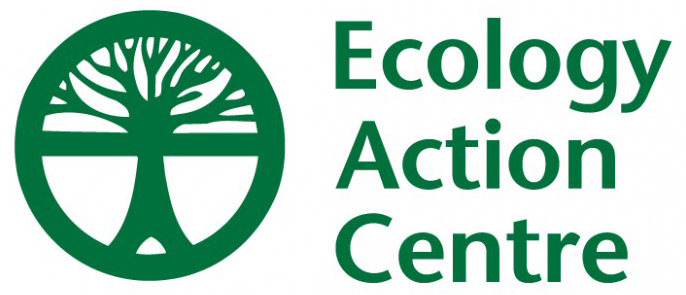Map & documents reveal key biodiversity areas “not acknowledged” in forestry plan
A Freedom of Information Request has revealed documents and maps identifying key biodiversity areas that are at risk in the Department of Natural Resource’s Western Crown Lands Planning Process (WCLPP).
The WCLPP is an on-going planning process for the 1.5 million acres of Crown land in Western Nova Scotia that was initiated shortly after the province bought 550,000 acres of land from Resolute Forest Products for $117.7 million after they closed the Bowater mill in Liverpool in mid-2012. The plan classifies areas of Crown lands in western NS into one of three categories to guide local management decisions; Resource Management, Multiple Value and Environmentally Sensitive Areas.
The “Biodiversity Science Advisory Team”, consisting of staff from the Department of Natural Resource’s Wildlife Division and staff from Nova Scotia Environment, was established to provide input into the planning process. The Team created a map and supporting documents that identified important biodiversity areas in western Nova Scotia.
Cross referencing the map produced by the team with the current Western Crown Lands Plan indicates that many of the important biodiversity areas identified by the team have been classified as Resource Management Zones, where measures to protect biodiversity values will be the weakest.
A follow up document produced by the Biodiversity Science Advisory Team indicated that the plan devalues biodiversity to make way for increased forest harvest levels;
“Several areas of high biodiversity value identified by the Biodiversity Science Advisory Team are not acknowledged. These omissions occur disproportionately where lands of high biodiversity value overlap lands of high forestry value. The key concern here is that the priority given to forestry in these areas is presented as the outcome of an integrated and balanced planning process, when it appears that in reality biodiversity was simply devalued where it might impinge upon forestry if accommodated.”
The Ecology Action Centre is concerned that the plan does not acknowledge the existence of these important biodiversity values nor provides any indication what measures, if any, will be put in place to ensure they are not negatively impacted by activities such as forest harvesting. And while the Centre recognizes the need for wood supply from these lands, EAC wants to ensure that forestry is practiced in a way that protects the key biodiversity values identified by the Biodiversity Science Advisory Team.
“This isn’t necessarily a question of whether or not we harvest trees in these areas, but rather how that harvesting takes place and making sure that forestry will not have an adverse effect on things like species at risk, rare plants, critical habitats and other important biodiversity values identified by our own government biologists” EAC Forestry Program Coordinator Matt Miller says.
Mr. Miller is also concerned about the planning process itself, saying that too much information is being kept from the public and too many decisions are being made by DNR staff behind closed doors. “We would likely be more supportive of the outcome if we had more confidence in the process” says Miller. “Rather than continue with the type of closed-door model we’ve seen with this plan so far, a process that only allows for input once decisions are largely already made, a more effective and appropriate model would see government convene a group of key stakeholders to formulate the plan collaboratively. This model is one stakeholders in this province have experience with from past planning initiatives and it is the type of collaborative, transparent and informed decision making process that the government committed to in the Natural Resources Strategy but has yet to fully embrace. ”
EAC is hopeful that the additional planning and consultation committed to in the plan will highlight these and other important biodiversity areas and clearly communicate the policies that will guide forest management in areas of high biodiversity value before long term timber licenses are handed out.
“This plan is the government’s opportunity to operationalize the commitments made in the Natural Resources Strategy and to act on the direction of the Ivany Commission report that calls for ‘consistent use of the most effective, transparent and inclusive public engagement processes and methods to support decision-making on management of natural resources.’ The purchase of the Bowater lands was a once-in-a-lifetime opportunity for this province, and we need to take the time to get this plan right for present and future generations of Nova Scotians.”
Some of the key biodiversity hot spots and their associated biodiversity values that were identified by the Biodiversity Science Advisory Team that are currently located in exclusive “Resource Management” zones include;
The Nictaux River watershed: Described as “arguably the richest river in western Nova Scotia.”
Wildcat River & Lower Medway River/Ten Mile Lake: (no description of biodiversity value provided in documents received from freedom of information request)
Tobeatic/Rossignol: Large, contiguous, undisturbed habitats with low road density that are essential for many provincially and nationally listed species at risk, including endangered mainland moose populations. Contains wetlands of “international significance.”
Meteghan: “The region has more productive lands and is richer in biodiversity acre-for-acre than the vast majority of Crown lands in the province.” The area is home to a population of provincially endangered American Marten and regionally rare old forest patches. These relatively large and contiguous blocks of Crown land are located in a region of extremely fragmented property ownership – and thus have value for this relative intactness.
LeHave River Watershed: “Supports some of the richest floodplain habitat in western Nova Scotia” that are “remarkably intact and complex” and supports “a number of regionally rare species.”
-30 –
Matt Miller, Forestry Coordinator
forests@ecologyaction.ca
